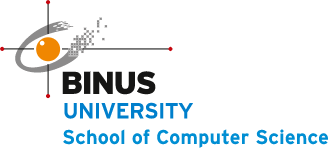DEVELOPMENT OF PROJECT, RESOURCE AND ASSET MANAGEMENT APPLICATION FOR SAMSUNG R&D INSTITUTE INDONESIA USING LARAVEL 5
development of project, resource and asset management application for samsung r&D institute indonesia using laravel 5
Oleh : William Kho Khuan, Moses Kurniawan, Andreas Terrius Appandi, Rini Wongso, Nisa Assyifa
Technology convergence is creating a world in which data is networked to a point where information is abundant, accessible and ubiquitous (Schaper, 2011, p. 374). People nowadays are flooded with information. The abundance of information could make people lose focus on the essential information needed. Information need to be managed in order to help people understand the big picture of the situation and gather detailed information about it.
As the technology capability in data processing is increasing rapidly, every business must be able to receive, process, and utilize a significant amount of information (Schaper, 2011, p. 375). As one of the leading companies in IT business, Samsung Research and Development Institute Indonesia (SRIN) faces the challenge to manage a large amount of information in its product. SRIN’s product includes Business to Business (B2B) software solution, Business to Customer (B2C) software solution and innovative software research. SRIN has developed a Product Life Cycle (PLC) to manage its software solution development.
SRIN’s PLC is a Standard Operation Procedure (SOP) used to develop a product. There are five steps in SRIN’s PLC which includes: Ideation and requirement gathering, weighting process, project kickoff, software development and product launching. In the ideation and requirement gathering step, the purpose and the general requirements of the product is defined from internal initiative or request from other businesses. Not all requests can be initiated as a project because the team of Intellectual Property and Knowledge Management (IP&KM) determines the value of the requests through a weighting process which is done in the second step of the PLC. The management team filters the requests based on the result and prioritizes requests that should be developed. The third step is the project kick-off, in this step the management team decides who will be involved as the Product Owner (PO), Project Management Officer (PMO), User Interface / User Experience (UI/UX) team, developer team and Quality Assurance (QA) team. The fourth step which is the software development, begins when the all of the teams are ready. The project will move into the last phase which is the product launching, when the project finishes and passes the User Acceptance Test (UAT). Therefor these steps are required before SRIN is able to deliver the product to the client.
Upon monitoring SRIN’s PLC, the management only has one tool which is the JIRA project management tool. The rest of the documents related to the projects are stored on different platforms. This condition happens not only in SRIN’s PLC but also in SRIN’s daily operational activity which covers projects, resources and assets. Projects are the product which will be delivered by SRIN as a usable product. Resources are SRIN’s employees. Assets include SRIN’s device, network facility and local shared storage center. Each department has their own documents to record their daily operational activity which is stored in a local shared storage. The information exchange process is inefficient because a department needs an approval to access the document from the other department which takes time. Besides that, the document update process is also inefficient because when one document is updated, the other document related to it must be manually updated because each document has different format. The inefficient processes mentioned before is caused by the lack of centralized system.
Therefore, the management needs an integrated information system. The system should be able to monitor project, resources and assets in SRIN. The employee also needs this centralized platform to keep historical data for add, update and delete operations for auditing purposes. The solution proposed to the problem is a project management application that is capable of tracking projects, assets, and resources. The application should be capable of displaying real time information data being updated by multiple departments in SRIN. Beside its capability to display information, the application should give access to the user to add, update and delete data, and store historical data.
Because of the fact that the data is used to create reports, it is important that the application is capable of exporting data in a way that the user can process further. The application should also be capable of sending notification and reminder emails to the user related to the project, resource, and asset managing. All these information and features should also be easily accessible by the user without needing a lot of setups.
The effect size comparisons in the use of Web-based interventions compared to non-Web-based interventions showed an improvement in outcomes for individuals using Web-based interventions to achieve the specified knowledge and/or behavior change for the studied outcome variables (Wantland, Portillo, Holzemer, Slaughter, & McGhee, 2004).
A web based application provides a better accessibility and usability compared to a non-web based application. Due to the following reason the application is developed as a web based application. Using a web platform, the user can access the application with only a web browser and has a wider accessibility compared to a non-web based application.


